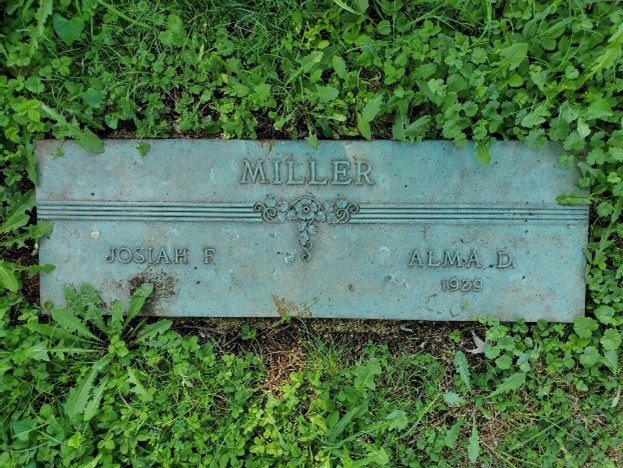Maple Park Cemetery was founded as a rural cemetery, a style of cemetery that became very popular starting in the nineteenth century. Rural cemeteries have park-like, landscaped grounds where people may come and enjoy nature. Cemetery visitors are encouraged to picnic on the lawns, take long walks around the grounds, and enjoy the architecture and scenery. Rural cemeteries are widely seen to be the precursors to modern-day public parks.
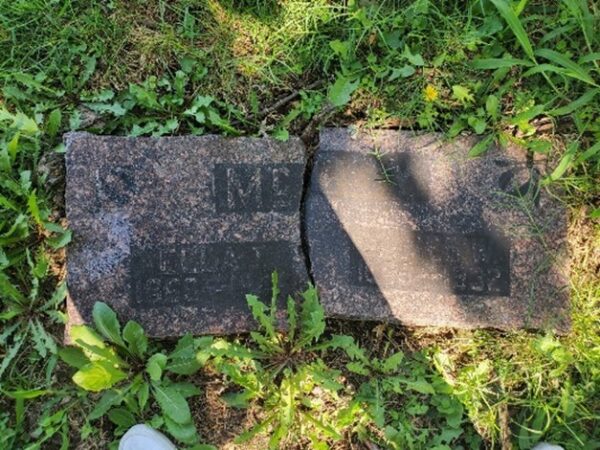
Headstone of Ella T. and James W. McCoy
Midwest American Ozarks culture
1932
Pink granite, L. 51 cm x W. 37 cm x H. 6 cm
Maple Park Cemetery Block 1, Lot 3
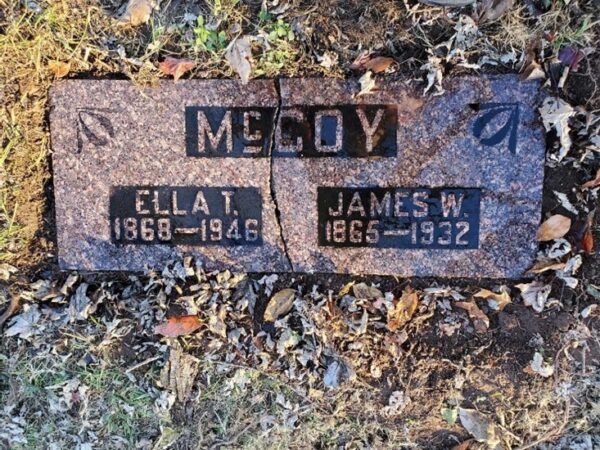
Headstone of Ella T. and James W. McCoy
Midwest American Ozarks culture
1932
Pink granite, L. 51 cm x W. 37 cm x H. 6 cm
Maple Park Cemetery Block 1, Lot 3
This monument for Ella and James McCoy is a simple, rectangular gravestone, but it is made using a sparkling, highly polished piece of pink granite, a durable stone that became a popular choice of gravestone medium starting in the late 19th century. The epitaph on the gravestone is made using a negative technique, where the background is engraved painted out, so the letters themselves are highly visible, appearing in the original bright pink of the stone.
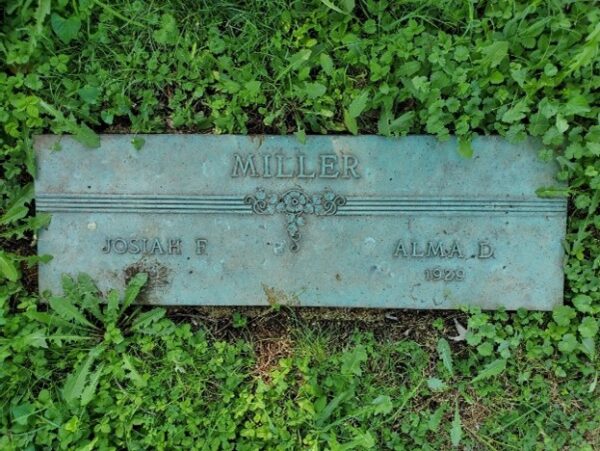
Headstone of Alma D. and Josiah F. Miller
Midwest American Ozarks culture
1929
Copper alloy, L. 90 cm. x W. 29 cm. x H. 2 cm
Maple Park Cemetery Block 1, Lot 12
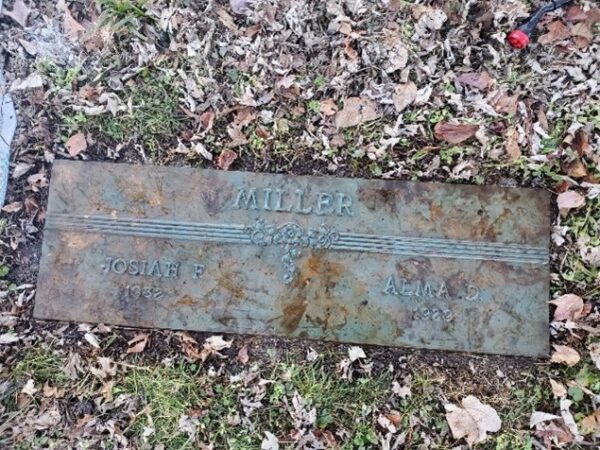
Headstone of Alma D. and Josiah F. Miller
Midwest American Ozarks culture
1929
Copper alloy, L. 90 cm. x W. 29 cm. x H. 2 cm
Maple Park Cemetery Block 1, Lot 12
While relatively simple, Alma and Josiah Miller’s grave monument is made in a popular copper alloy called “white bronze,” and different patinas form on the surface depending upon what comes in contact with the monument; fallen leaves, for example, turn the gravestone brown for part of the year, but the epitaph is still visible.
The floral designs on this monument are also highly meaningful. The central motif features a bell flower, which is often used to symbolize constancy and gratitude, and this may be a reflection on the couple’s marriage and life together. The vines could also represent the relationship between God and humanity, a reference to a Biblical passage in the book of John.
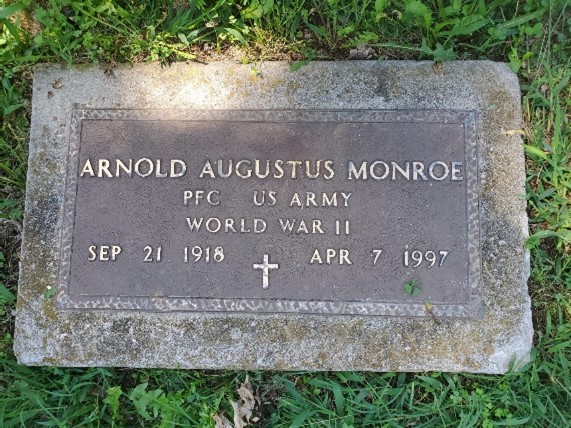
Headstone of Arnold Augustus Monroe
Midwest American Ozarks culture
1997
Concrete and copper, L. 74 cm x W. 46 cm x H. 6 cm
Maple Park Cemetery Block 1, Lot 34
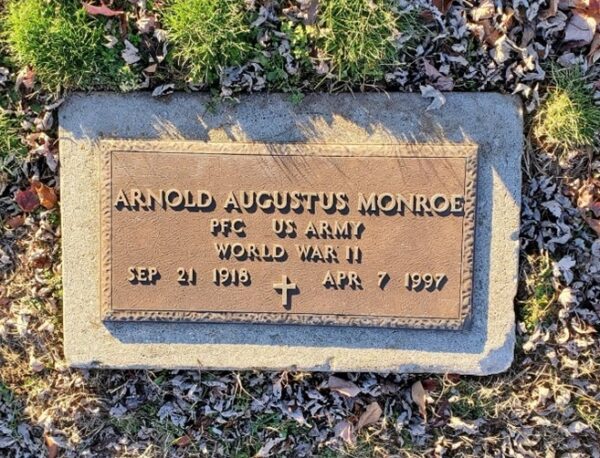
Headstone of Arnold Augustus Monroe
Midwest American Ozarks culture
1997
Concrete and copper, L. 74 cm x W. 46 cm x H. 6 cm
Maple Park Cemetery Block 1, Lot 34
The monument for Arnold Augustus Monroe may be a replacement gravestone for the original, as this type of government-issued military headstone replaced earlier renditions of World War II gravestones that were known as flat bronze grave markers. This new copper plaque gravestone is set on a stone base, and the design provided a space for a religious emblem or other emblem of faith to be embossed on the gravestone. As Monroe’s gravestone is embossed with a Latin cross, he was likely Christian.
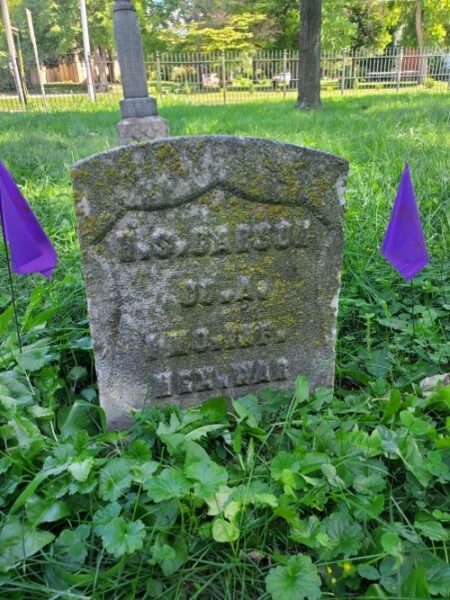
Headstone of H.S. Carson
Midwest American Ozarks culture
1908
Marble, L. 30.5 cm. x W. 10 cm x H. 35.5 cm
Maple Park Cemetery Block 1, Lot 24
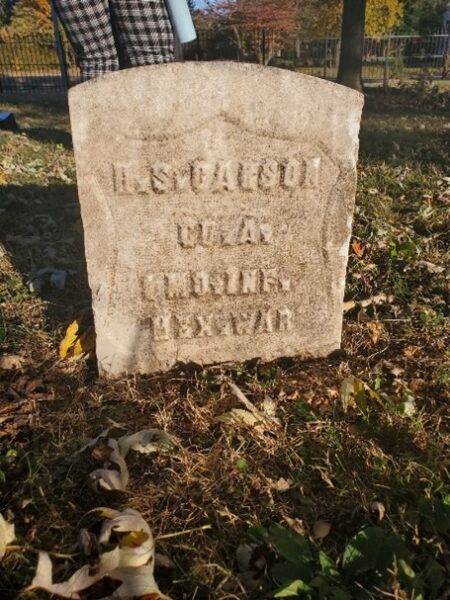
Headstone of H.S. Carson
Midwest American Ozarks culture
1908
Marble, L. 30.5 cm. x W. 10 cm x H. 35.5 cm
Maple Park Cemetery Block 1, Lot 24
The headstone of H. S. Carson is an example of the first style of headstone that was commissioned for United States veterans. With its rounded top shape and the recessed shield frame for the raised lettering, this design is commonly known as the “Civil War type” of military headstone, although these headstones were also used on the graves of veterans who served in the Revolutionary War, the War of 1812, the Spanish American War, and the Mexican American War (as Carson was). This gravestone appears much shorter than most military gravestones, but this is only because it has sunken into the ground over time.
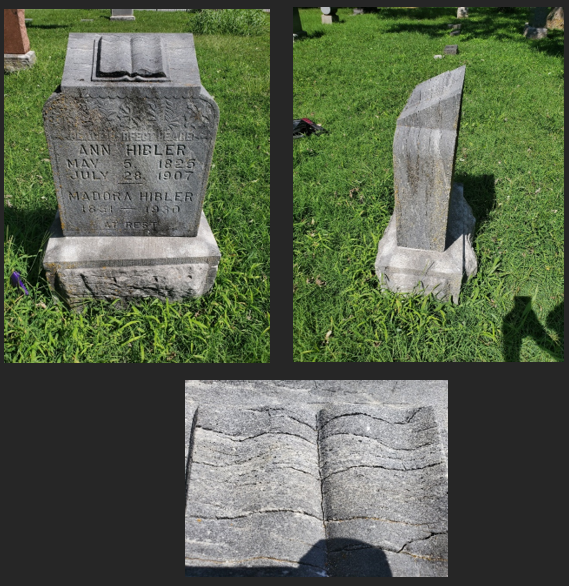
Headstone of Ann and Madora Hibler
Midwest American Ozarks culture
1907
Limestone, L. 76 cm x W. 52 cm x H. 107 cm
Maple Park Block 18, Lot 6
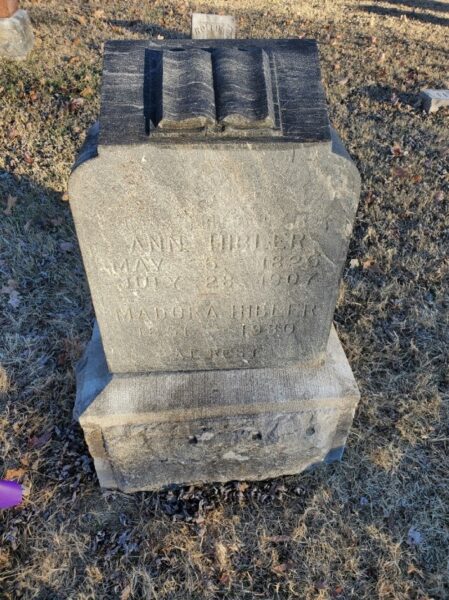
Headstone of Ann and Madora Hibler
Midwest American Ozarks culture
1907
Limestone, L. 76 cm x W. 52 cm x H. 107 cm
Maple Park Block 18, Lot 6
Ann and Madora Hibler were mother and daughter. Their grave monument is relatively large and elaborate, with sculpture on top of an open book on a podium. Books have many symbolic meanings in grave imagery, and the position of the book is important; a closed book can represent a full life that has come to a close, while an open book might symbolize a life that was cut short while it was still in progress – but it may also simply symbolize the Bible or the Book of Life.
While earlier gravestones depict images such as skulls and crossbones or a weeping angel, focusing on grief, the imagery on early 20th-century gravestones tends to reflect changing attitudes toward death, with happier images and epitaphs that suggest eternal peace and rest. The epitaph on the Hibler monument reads, “Peace. Perfect. Peace.” This phrase likely comes from a 19th-century hymn of the same name that is thought to be about finding peace in heaven after one’s death. The bottom of the epitaph, meanwhile, reads, “At Rest.”
For more information, you may contact the researcher(s) noted in the title of this exhibit entry, or Dr. Billie Follensbee, the professor of the course, at BillieFollensbee@MissouriState.edu

